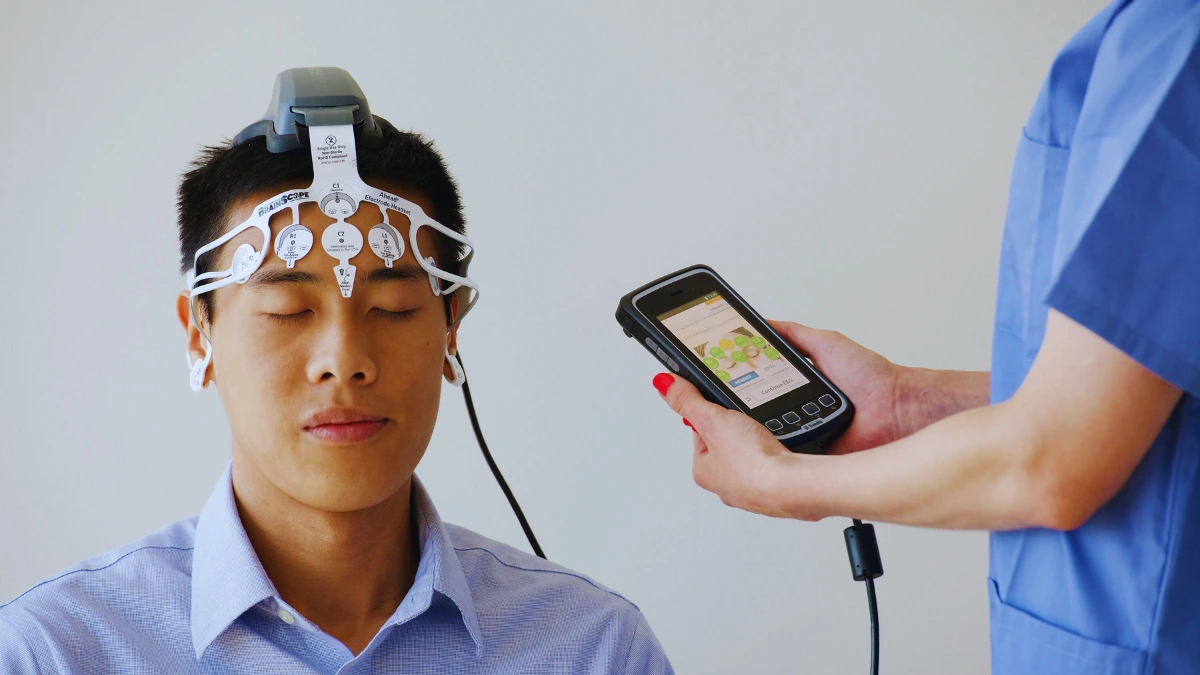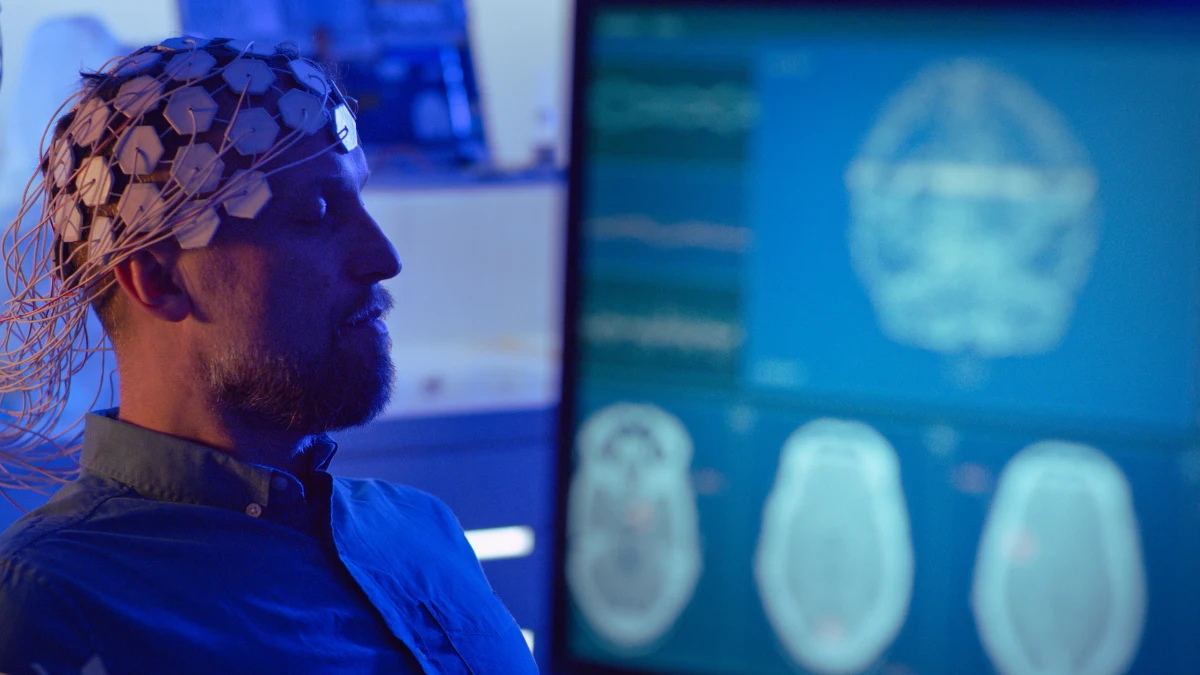Mind-controlled gadgets, once science fiction, are now a reality. Technologies like EEG headsets and brain-computer interfaces (BCIs) enable users to interact with machines using neural signals, from controlling drones to restoring mobility for paralyzed patients.
While revolutionary, these tools raise urgent privacy and ethical concerns. The neurotech market is projected to hit $21 billion by 2026 (Statista), driven by both medical breakthroughs and consumer gadgets like meditation-tracking headbands.
However, unregulated devices flood the market, lacking oversight and risking data exploitation.

How Mind-Controlled Gadgets Work?: Decoding the Brain
Brain-to-machine technology captures neural signals and turns them into actions. Scientists have developed various methods to read brain activity, from external headsets to surgical implants.
These technologies work by detecting electrical patterns your brain naturally produces when you think or want to move.
EEG Headsets (Neurable, NextMind)

EEG headsets use sensors placed on your scalp to detect brain waves without surgery. They pick up electrical signals when neurons communicate, letting you control computers with thoughts alone.
Companies like Neurable and NextMind have created consumer versions for gaming and productivity.
These devices track specific brain patterns. Focus on moving a virtual object, and the headset reads those intentions.
The tech works best with simple commands rather than complex thoughts, as the skull blocks some brain activity.
Many consumers use these for meditation tracking or controlling VR experiences. The Muse headband, for example, gives feedback on your mental state during meditation.
The biggest concern? Security often falls short of medical standards, putting personal brain data at risk of exposure to third parties.
BCI Implants (Neuralink, Synchron)

Brain-computer interface implants connect directly to brain tissue for more accurate readings. Companies take different approaches to this technology.
Neuralink requires surgery to place tiny electrodes into the brain, targeting conditions like paralysis and ALS with precise neural monitoring.
Synchron offers a less invasive option with their stentrode. It enters through blood vessels to reach the motor cortex, avoiding open brain surgery while still capturing detailed brain signals.
This approach reduces surgical risks while maintaining good connection quality.
Real-world success stories show the potential. University of Pittsburgh researchers created a robotic arm controlled entirely by thought, helping paralyzed patients regain movement.
The technology reads motor intentions directly from the brain and translates them into mechanical actions. The medical benefits look promising, but questions about long-term effects and data security remain central concerns.
Wearables (CTRL-Labs)

Some mind-control technologies work without touching your head at all. Electromyography (EMG) devices read the electrical signals sent from your brain to your muscles, particularly in your arms.
These signals happen just before physical movement. Meta’s CTRL-Labs created an armband that detects these nerve impulses.
Think about clicking a mouse, and the band catches that signal before your finger even moves.
This allows for gesture control without actual movement, opening possibilities for people with mobility limitations.
The benefit? These wearables feel less invasive than brain implants or headsets. The problem? Many fall outside FDA regulation since they’re marketed as consumer gadgets rather than medical devices.
This creates a loophole where your neural data might receive less protection than standard health information. Hackers who access this data could potentially gain insights into your intentions and actions without your knowledge.
Privacy Risks: Your Brain as a Data Goldmine
Your brain activity contains far more personal information than most people realize. Neural signals can reveal your emotions, health status, and even passwords or PINs.
As brain-reading technology becomes more common, these signals turn into valuable data that companies and hackers alike might want to access.
Hacking Neural Data

Brain signals are vulnerable to interception just like any digital data. At DEF CON 2022, security researchers showed how easily they could hack EEG devices to steal authentication patterns. This isn’t science fiction—it’s happening now.
Your neural patterns are unique to you. When you think about specific words or actions, your brain creates distinctive electrical signals.
UC Berkeley researchers proved this in 2012 when they reconstructed spoken words just from brainwave data. Imagine if someone could read what you’re thinking about typing before your fingers touch the keyboard.
The risk goes beyond stealing passwords. Your brain activity shows what catches your attention, what you find rewarding, and what makes you anxious.
This information could be used for manipulation far more effectively than current advertising. Someone with access to your neural data essentially has a window into your mind.
Health Data Exploitation

Brain signals contain hidden health insights that even you might not know about.
Early signs of conditions like depression, Alzheimer’s, or Parkinson’s can appear in neural patterns before symptoms become obvious to doctors.
Insurance companies would love this information. Your rates could change based on what your brain activity suggests about future health problems.
Think about it: would you want your insurance provider to raise your premiums because your neural patterns match those of people who later developed dementia? Without proper protections, this scenario isn’t far-fetched.
Employers might also want access to this data. They could monitor how focused you are during work hours or check if you’re stressed when given certain tasks.
A company could even use BCI data to evaluate your cognitive abilities without telling you. All this happens beneath your conscious awareness, making it difficult to control what information you’re sharing.
Unregulated Devices

Many brain-reading gadgets exist in a regulatory gray zone. Medical devices face strict FDA oversight, but consumer EEG headsets often don’t. They’re classified as wellness or entertainment products instead.
This classification loophole means many neural devices lack basic security features. Data might travel unencrypted between your headset and phone.
Companies can collect and store your brain activity with minimal restrictions on how they use it. Some might even sell this information to data brokers who combine it with other personal details.
Children’s toys with EEG capabilities present special concerns. Kids’ developing brains produce valuable data for companies interested in understanding cognitive development.
Yet these toys rarely come with appropriate safeguards. Parents may not fully understand what information these seemingly innocent gadgets collect about their children’s minds.
RELATED:
Ethical Dilemmas: Who Owns Your Thoughts?
The question of who owns neural data raises profound philosophical and legal questions. Your thoughts feel fundamentally yours, yet when they’re captured by technology, the ownership becomes murky.
This creates unprecedented ethical challenges that our laws and social norms haven’t caught up with.
Data Ownership

Most people assume they own their thoughts, but terms of service often say otherwise.
Companies frequently claim broad rights to any data collected through their devices, including brain activity.
When you use a neural headset, the fine print matters more than you might think. The agreement might give the company permission to store, analyze, and even sell your brain data.
Few users read these lengthy documents, yet they’re signing away something incredibly personal. This situation creates a disconnect between what feels right and what’s legally permitted.
Legal frameworks struggle with how to classify neural information. Should it receive special protection beyond standard data privacy laws? Some experts argue brain data deserves the same legal status as organs or DNA—something that cannot be commodified.
Others suggest creating a new category of “mental privacy rights” that gives individuals control over how their neural information is used, stored, and shared.
Workplace & Insurance Risks

Companies might pressure employees to use neural monitoring technology. What starts as an optional productivity tool could become mandatory, with refusal affecting job prospects or performance reviews.
Dr. Anna Wexler from the University of Pennsylvania warns about this slippery slope. Employers could track your attention levels during meetings or measure your stress response to new assignments.
This constant neural surveillance creates power imbalances that favor companies over workers. Even if the monitoring starts with good intentions, the data could influence decisions about promotions, assignments, or even layoffs.
Insurance companies present another concern. They might offer discounts for wearing neural monitors, similar to fitness tracker programs some health insurers already use.
This seemingly beneficial arrangement could turn problematic if your rates increase based on unfavorable brain patterns.
The science connecting neural signals to future outcomes remains imperfect, yet decisions affecting your coverage might rely on these inexact predictions.
RELATED:
The Best ChatGPT Prompt I’ve Ever Created – I spent 2 Months Curating This Prompt To Write Prompts
Medical vs. Consumer Divide

Medical neural devices and consumer gadgets operate under vastly different standards. This creates an ethical gap that puts users at risk.
Therapeutic BCIs like Synchron’s stentrode undergo rigorous testing and follow strict medical ethics guidelines. They exist to help people with serious conditions.
The benefits outweigh the privacy concerns for patients with paralysis or severe motor limitations. These medical devices prioritize healing above all else.
Consumer neurotech follows different priorities. Companies selling meditation headbands or focus-enhancing headsets aim to make profits. Their ethics review processes may not match medical standards.
This creates a scenario where your brain data receives different protection levels depending on whether the device is labeled “medical” or “consumer”—even when the underlying technology works similarly.
The gap between these approaches raises serious questions. Should all brain-reading technology follow medical ethics guidelines regardless of how it’s marketed?
Many experts say yes, arguing that neural data deserves special protection regardless of why it’s being collected.
Solutions: Safeguarding the Mind
Protecting neural privacy requires a combination of technical, legal, and ethical approaches.
No single solution can address all the challenges, but together they form a framework for responsible neurotech development. These protections must evolve alongside the technology itself.
Encryption & Security

Strong encryption forms the first line of defense for neural data. Companies should implement bank-grade security measures throughout their systems.
Every stage of data collection needs protection—from the device on your head to storage in the cloud. End-to-end encryption prevents unauthorized access during transmission.
Secure storage protocols keep the data safe once it reaches company servers. These technical safeguards make it harder for hackers to steal your neural information.
Companies should also limit how long they keep brain data. The most secure information is that which no longer exists. Neural patterns from years ago may not help improve the service but still create privacy risks if breached.
Clear data retention policies with automatic deletion after a reasonable period would reduce this vulnerability. Users should receive notifications about what happens to their information and have options to request deletion.
Open-Source BCIs

Open-source neurotech projects like OpenBCI make the technology transparent and accountable. Anyone can examine the code and hardware designs to find security flaws or privacy issues.
This transparency builds trust. When a company’s neural interface is fully open to inspection, it can’t hide problematic data practices.
Independent researchers can verify security claims and suggest improvements. Users gain confidence that the device works as advertised without hidden functions collecting extra information.
Open-source approaches also democratize innovation. Small teams and academic researchers can contribute to advancing neurotech without massive funding. This creates alternatives to corporate-controlled devices.
The community of developers frequently prioritizes user privacy and control over marketability or data collection opportunities. With more diverse voices shaping the technology, ethical considerations stay at the forefront of development.
Regulation

Laws must catch up with neurotechnology. The EU’s GDPR treats neural data as “sensitive personal information,” but most countries lack specific neurotech regulations.
Lawmakers need to create clear guidelines about consent for neural data collection. Users should receive plain-language explanations of what information gets captured and how it will be used.
The right to withdraw consent and have data deleted should apply to brain information just as it does to other personal data. These basic protections would give people more control over their neural privacy.
Consumer protection agencies should extend their oversight to include neural devices. The FDA could expand its definition of medical devices to cover consumer neurotech with health implications.
This would close the regulatory loophole that allows companies to collect brain data with minimal oversight by labeling their products as entertainment or wellness tools rather than medical technology.
Tired of 9-5 Grind? This Program Could Be Turning Point For Your Financial FREEDOM.

This AI side hustle is specially curated for part-time hustlers and full-time entrepreneurs – you literally need PINTEREST + Canva + ChatGPT to make an extra $5K to $10K monthly with 4-6 hours of weekly work. It’s the most powerful system that’s working right now. This program comes with 3-months of 1:1 Support so there is almost 0.034% chances of failure! START YOUR JOURNEY NOW!
